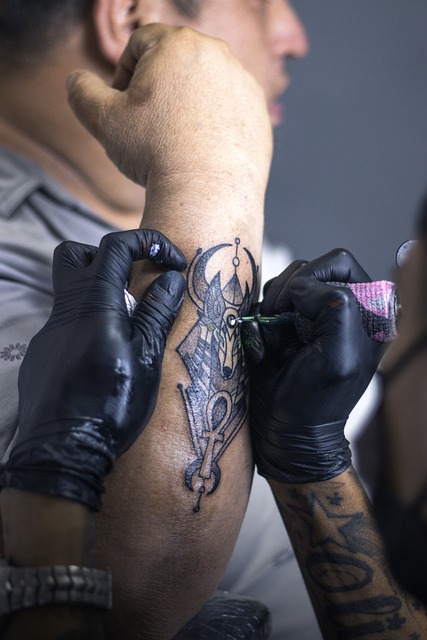Tattoos are a popular form of body art that has been around for centuries. However, as our tastes and preferences change over time, we may find ourselves wanting to remove or fade a tattoo with hydrogen peroxide. While there are many methods for tattoo removal, some people are turning to hydrogen peroxide as a more natural and cost-effective solution. The process of fading a tattoo with hydrogen peroxide, but it is important to note that caution and proper safety measures should always be taken when attempting any form of tattoo removal.
What is Hydrogen Peroxide
Hydrogen peroxide is a chemical compound that consists of two hydrogen atoms and two oxygen atoms, represented by the formula H2O2. It is a colorless liquid that is widely used for its oxidizing properties. Hydrogen peroxide is available in different concentrations, ranging from 3% to 90%.
There are two main types of hydrogen peroxide:
- Food-grade hydrogen peroxide, which is 35% concentration and is used for food preparation, cleaning, and disinfection
- Pharmaceutical-grade hydrogen peroxide, which is 3% concentration and is commonly used in medical settings for wound care and disinfection
In the medical field, hydrogen peroxide is used for a variety of purposes, including cleaning wounds and sterilizing medical equipment. It can also be used as an oxidizing agent in some medical procedures.
Hydrogen peroxide can be used for tattoo fading by applying it to the skin in a process called oxidation. The hydrogen peroxide breaks down the tattoo ink, allowing the body to absorb and remove the ink particles over time.
How Does Hydrogen Peroxide Fade Tattoos?
To understand how hydrogen peroxide fades tattoos, it’s important to know how tattoo ink is applied to the skin. Tattoo ink is injected into the dermis, the second layer of skin, where it becomes trapped in the cells.
Hydrogen peroxide works by oxidizing the tattoo ink particles, which breaks them down into smaller molecules that the body can absorb and eliminate. When hydrogen peroxide is applied to the skin, it penetrates the outer layers of the skin and reacts with the tattoo ink. This process is known as oxidation.
The chemical reactions involved in tattoo fading with hydrogen peroxide include the breakdown of the ink particles into smaller molecules and the formation of new chemical compounds. The process can take time and repeated applications of hydrogen peroxide may be needed to see significant results.
Factors that can affect the efficacy of hydrogen peroxide in fading tattoos include the age of the tattoo, the type of ink used, the depth of the ink, and the concentration of hydrogen peroxide used. It’s important to note that hydrogen peroxide can also cause damage to the skin, so proper safety measures and precautions should be taken when using it for tattoo fading.
Safety Precautions When Fading Tattoos with Hydrogen Peroxide
While hydrogen peroxide can be an effective method for fading tattoos, it is important to take proper safety precautions to avoid any potential risks or dangers.
Risks and potential dangers of using hydrogen peroxide for tattoo fading
Some risks associated with using hydrogen peroxide for tattoo fading include skin irritation, chemical burns, scarring, and changes in skin pigmentation. In some cases, hydrogen peroxide can cause an allergic reaction, which can be severe. It is also important to avoid using hydrogen peroxide on tattoos that are infected or have not fully healed, as this can increase the risk of infection and delay the healing process.
Precautions to take before and during the tattoo fading process
Before attempting to fade a tattoo with hydrogen peroxide, it is important to perform a patch test on a small area of skin to check for any adverse reactions. When applying hydrogen peroxide, it is important to use gloves, protective eyewear,and a face mask to avoid direct contact with the skin and to prevent inhalation of fumes. It is also important to use a low concentration of hydrogen peroxide (3% or less) and to dilute it with water before application.
During the tattoo fading process, it is important to avoid excessive scrubbing or rubbing of the skin, as this can cause further irritation or damage. After application, it is important to keep the area clean and dry to avoid infection and to apply a moisturizer or ointment to soothe the skin.
What to do in case of adverse reactions
If you experience any adverse reactions to hydrogen peroxide, such as redness, swelling, itching, or a rash, discontinue use immediately and seek medical attention if necessary. If hydrogen peroxide comes into contact with your eyes, rinse them with water for several minutes and seek medical attention immediately.
Step-by-Step Guide to Fading a Tattoo with Hydrogen Peroxide
Fading a tattoo with hydrogen peroxide requires careful preparation and attention to detail. Here is a step-by-step guide to the process:
Preparation for the tattoo fading process
Before you begin, make sure you have all the necessary supplies, including hydrogen peroxide, distilled water, cotton balls, and a clean towel. It is also important to wear gloves, protective eyewear, and a face mask to avoid direct contact with the skin and to prevent inhalation of fumes.
Application of hydrogen peroxide on the tattoo
- Start by cleaning the tattooed area with soap and water and patting it dry with a clean towel.
- Mix a small amount of hydrogen peroxide with distilled water in a ratio of 1:2 (one part hydrogen peroxide to two parts distilled water).
- Apply the mixture to the tattooed area using a cotton ball, making sure to cover the entire tattoo.
- Allow the mixture to sit on the skin for 10-15 minutes, depending on the depth of the tattoo and the concentration of hydrogen peroxide used.
- Rinse the area thoroughly with cool water and pat it dry with a clean towel.
Aftercare instructions
After applying hydrogen peroxide to your tattoo, it is important to follow these aftercare instructions to promote healing and prevent infection:
- Avoid exposing the area to direct sunlight or tanning beds.
- Keep the area clean and dry.
- Apply a moisturizer or ointment to soothe the skin and prevent dryness.
- Avoid excessive scrubbing or rubbing of the skin.
- Repeat the process once a week for several weeks, until the tattoo fades to your desired level.
Expected timeline for tattoo fading
The timeline for tattoo fading with hydrogen peroxide can vary depending on several factors, including the age and type of tattoo, the depth of the ink, and the concentration of hydrogen peroxide used. In general, it may take several weeks or even months of repeated applications to see significant fading. It is important to be patient and consistent with the process for best results.
Alternative Methods for Fading Tattoos
While hydrogen peroxide is one option for fading tattoos, there are other methods available as well. Here’s an overview of some common alternatives:
Laser tattoo removal
Laser tattoo removal is a popular method for fading tattoos. It involves using a laser to break down the ink particles in the skin, which are then absorbed and eliminated by the body’s natural processes. Laser tattoo removal can be effective, but it can also be expensive and may require multiple sessions. It can also be painful and can cause scarring or skin discoloration.
Tattoo removal creams
Tattoo removal creams are another alternative to hydrogen peroxide. These creams work by breaking down the ink particles in the skin and allowing them to be absorbed and eliminated by the body. While they can be effective for some people, they may not work for everyone and can also cause skin irritation or allergic reactions.
Chemical peels
Chemical peels involve applying a chemical solution to the skin to remove the top layer and expose the layer of skin with the tattoo. This method can be effective for fading tattoos but can also be painful and cause scarring or skin discoloration.
Comparison of the effectiveness of hydrogen peroxide and other methods
When comparing the effectiveness of hydrogen peroxide to other methods, it is important to consider the type of tattoo, the depth of the ink, and the individual’s skin type and sensitivity. While some methods may be more effective for certain types of tattoos or skin types, hydrogen peroxide can be a gentler and less expensive option.
Pros and cons of each method
Each method for fading tattoos has its own set of pros and cons. Laser tattoo removal, for example, can be effective but is expensive and can cause scarring. Tattoo removal creams can be affordable and easy to use, but may not work for everyone and can cause skin irritation. Chemical peels can be effective but can also be painful and can cause scarring or skin discoloration. Hydrogen peroxide is a gentler and less expensive option but may require multiple applications to see significant results. It is important to consider all of these factors when choosing a method for fading a tattoo.
FAQ
Q1.Can hydrogen peroxide completely remove a tattoo?
No, it is unlikely to completely remove a tattoo, but it can help fade it.
Q2.How often should hydrogen peroxide be applied to fade a tattoo?
The frequency depends on the individual’s skin type and sensitivity, as well as the concentration of the solution. Start with a low concentration and apply once a day or every other day.
Q3.What are the side effects of using hydrogen peroxide for tattoo fading?
Possible side effects include skin irritation, dryness, discoloration, scarring, infection, or allergic reaction.
Q4.Is it safe to use hydrogen peroxide on all skin types?
Hydrogen peroxide can be used on most skin types, but may cause more irritation or damage to sensitive or dry skin. Patch test and start with a low concentration to minimize the risk of adverse reactions.
Conclusion
Hydrogen peroxide is a common household chemical that can be used to fade tattoos. While it may be effective in reducing the appearance of a tattoo, it is unlikely to completely remove it. When using hydrogen peroxide for tattoo fading, it is important to take safety precautions to minimize the risk of adverse reactions. Alternative methods for tattoo fading should also be considered, and seeking professional advice is recommended before attempting any tattoo removal or fading procedure.While hydrogen peroxide may be a viable option for some individuals, it is important to carefully consider the risks and benefits and consult with a professional before attempting to fade a tattoo at home.


